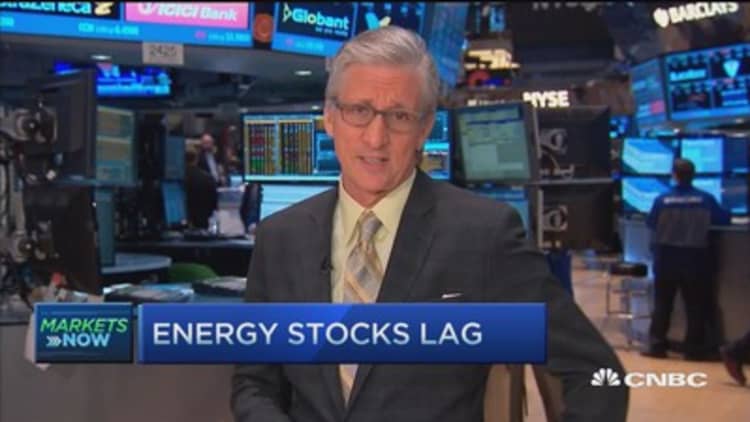
There's something strange going on in Tech Land.
On Friday, the hit a historic high and the made multi-year highs, but breadth was negative with three stocks declining for every two advancing.
Huh? Historic highs for the Nasdaq, but more stocks declining than advancing?
That is a weird divergence, and there's a reason for it.
Read More Apple at 'inflection' point, poised for double digit rally to new highs: Technician
The leadership is very narrow. A small group of tech stocks are pushing the indices higher. And that is worrisome.
If you are a broad investor—I mean the kind that invests in the S&P 500—it's no secret that there are three sectors that matter: technology, financials, and health care.
But technology really matters. It's 20 percent of the market cap of the S&P 500, the largest sector.
Right now, there are four technology stocks that really matter.
Here's the four, and how much they are up in July:
Mind you, this is how much they are up in July! After three weeks!
So what? They are distorting the indices. The market caps of these companies are huge.
Market capitalization (billions):
- Apple: $747
- Google: $468
- Facebook: $268
- Amazon: $220
- Total: $1.7 trillion
The Nasdaq 100's market cap is $5.4 trillion, so do the math. Those four stocks account for roughly 31 percent of its market cap.
Wow.
Read More
And the advance of those four is what is fueling the outsized gains in the Nasdaq 100, which is up 6 percent this month alone. That is handily outperforming all indices, even the S&P 500 (up 3 percent), which includes all four of the Nasdaq 100's big four stocks.
Our partners at Kensho have noticed this as well. The Nasdaq 100 is more than three standard deviations above its 50-day moving average.
That is a very rare occurrence. Three standard deviations means the Nasdaq 100 stays within this range on the 50-day moving average more than 99 percent of the time.
It's outside that range now.
How rare is this? Since 1980, it's only happened nine times. In eight of those nine times, it has moved lower rather than higher in the week after.
Extended indices, and a few very big leaders, with everything else trailing. That is narrow leadership.


